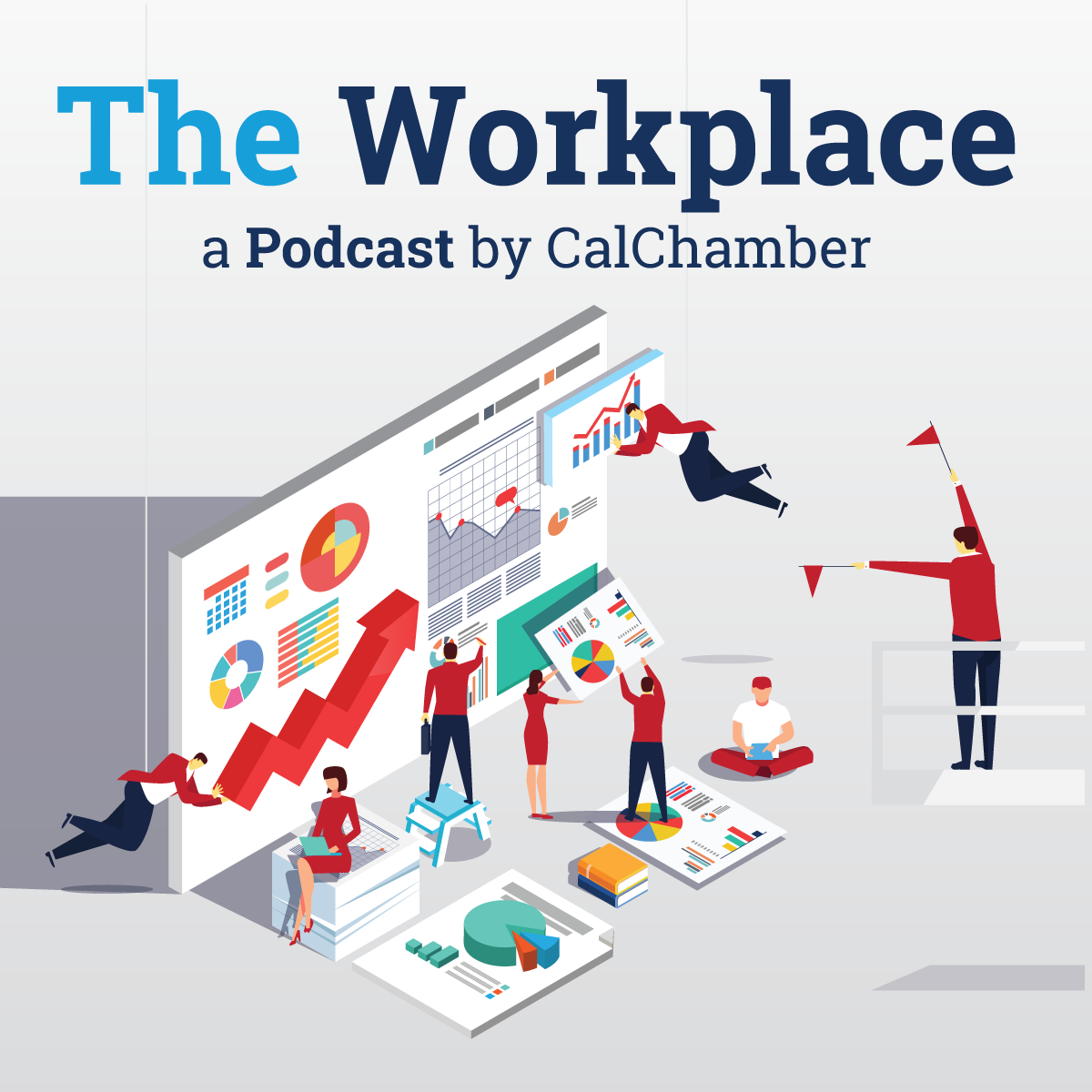
In Episode 128 of The Workplace podcast, CalChamber Executive Vice President and General Counsel Erika Frank, and Katie McConnell Olson, founder and CEO of Hire Education Consulting Group, discuss current recruitment challenges and share best practices for hiring in today’s jobs climate.
In today’s current hiring environment, depending on what one reads, it’s either “The Great Resignation” or “The Difficult Find,” Frank tells podcast listeners.
Recruitment challenges abound in today’s jobs climate, Olson says. Her firm, for example, was previously hiring about 10 candidates a month, but this month the firm will be hiring only two people.
Not only is the firm having a difficult time finding candidates, but it is also taking a really long time for people to respond to the firm. Additionally, the firm is seeing onboarding times drag out longer. While it used to take 30–45 days for a new hire to start their job, it is now taking 65–90 days.
Why is that, Frank asks?
Olson thinks that part of the reason is that people are tired of the chaos COVID-19 has produced. Many people are remodeling their homes or changing their work-life balance perspective. Many people don’t want to change jobs right now, so the pool of people who are actively looking for a job is smaller.
Workers Want Flexibility
For companies seeking to hire higher salary individuals or experienced professionals, flexibility is the name of the game.
After having employees work 100% from home, companies are starting to ask workers to come back into the office but are seeing resistance. Olson says she has not seen it turn into a “Great Resignation” just yet, but perhaps that is looming.
Flexibility, she points out, has become so much more important than ever before. Before the COVID-19 pandemic, people would lose 3–4 hours of their day getting ready for work and commuting to the office. After having that time integrated back into their day, many people are deciding that they don’t want to give that up.
“Migrating to at least a hybrid schedule of three days in office, two days remote is going to be a non-negotiable or these hiring managers are going to find that their opportunities are obsolete,” Olson says.
Working 100% remotely doesn’t appeal to everyone, however, and that is why companies should offer flexibility, Olson suggests.
Still, she says, the market for candidates interested in a strict 8:30 a.m. to 5 p.m. job is slim.
Moreover, a job candidate may perceive the lack of offering work flexibility as a red flag. The company may be perceived as having a control-oriented culture or not being technologically savvy, Olson explains.
Recruitment Tips
While money remains a motivating factor for prospective candidates, it is not the leading indicator, Olson says.
When trying to compete in today’s market, an employer should sit down, grab a piece of paper and write down their company’s secret sauce. Why do people like to work at your company? If you’re a construction company, for example, what are some cool projects your company has done?
Olson says companies should figure out what makes their business stand out, why current employees stay and promote that.
Short-Term Predictions
As kids return to school in the coming months, Olson expects some stability to be restored and expects an uptick in available candidates. She also thinks that more people will give entrepreneurship a try.
Olson says most offices will likely adopt a hybrid work model and no longer offer 100% remote work arrangements.
Lastly, she expects a rise in salaries. Already, markets across the country are seeing salaries explode due to the talent scarcity. In the last 30 days alone, Olson has seen a 15%–20% increase in salaries.
“It’s been so wild,” she tells Frank.

